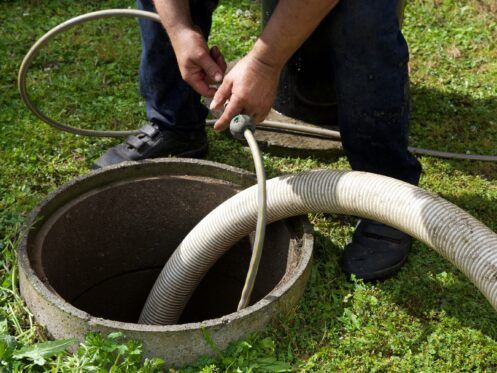Septic tank risers are a useful addition to any septic system, providing essential access for servicing and inspection. Properly installed risers provide an easy-to-access opening in the top of the tank for routine maintenance, pumping, repairs, or replaceable parts. With minimal installation costs, they can be a great investment that pays off long-term when your septic system is regularly serviced and inspected. Here, we’ll explore septic tank risers to help you understand how they work and why you need them.
1. What Are Septic Tank Risers?
Septic tank risers are extensions that attach to the top of a septic tank and bring the opening to ground level. They comprise plastic or concrete components designed to fit together and form a secure seal when attached to the tank. With risers, you no longer need to dig up your septic tank to be serviced or inspected; technicians can access it from ground level through the riser opening.
Additionally, risers are designed with interlocking parts, so they can be easily adjusted to accommodate tanks of different depths. This means multiple septic tanks in a single area can use the same risers, saving time and money during installation.
2. Types of Septic Tank Risers
Depending on your needs, septic tank risers come in various sizes and shapes. Common materials include concrete, fiberglass, PVC plastic, or polyethylene. The type you choose should be based on the specific requirements of your septic system and local building codes. It’s important to note that all risers should be designed with a tapered top to facilitate easy removal of access covers and other components.
When purchasing risers, it’s important to choose ones that are compatible with your septic tank material. For example, you don’t want to select concrete risers for a fiberglass tank or vice versa. The size of the riser you need will depend on the size of your tank, and some risers may need to be cut to fit properly. Additionally, all risers should be installed to ensure they are level with the ground surface for easy access.
3. How to Install Septic Tank Risers
Installing septic tank risers is straightforward, though some local building codes may require professional installation. In most cases, they dig a hole slightly bigger than your riser’s diameter and set it in place. Then, they secure it with cement or adhesive to ensure a tight seal. Once the installation is complete, the top of the riser should sit at ground level, allowing for easy access by technicians when performing maintenance or inspections.
It’s important to note that proper installation is critical for ensuring the longevity of your septic system. Failure to install risers correctly can lead to costly repairs, so be sure you choose a qualified contractor with experience risers and understands local building codes. For residents of Salina, KS, and the surrounding areas, Salina Septic Service can provide these services.
4. Benefits of Septic Tank Risers
They Help to Extend the Lifespan of Your Septic System
Without a riser, getting to your septic tank could prove to be a challenging and time-consuming task. Regular inspections and maintenance are crucial in ensuring the longevity of your septic system. With a septic tank riser, you can easily access and inspect your tank, making it easier to identify and solve any potential problems.
They Are Relatively Inexpensive
For homeowners looking for an easy and affordable way to simplify their septic care, risers are a great solution. They are relatively inexpensive and easy to install with minimal disruption to your yard. This makes them a great investment for any homeowner who wants to take better care of their septic system.
5. Disadvantages of Septic Tank Risers
They Can Be Prone to Leaks
One major downside of septic tank risers is that they can be prone to leaks when not properly installed. This is especially true for concrete risers, which require an extra layer of waterproofing during installation. Without proper sealing or caulking, water can penetrate the riser and cause damage to your septic system.
They Require Regular Maintenance
Risers need to be inspected and cleaned regularly to ensure they function properly. Without routine maintenance, debris can accumulate inside the riser, potentially blocking or slowing water flow. This could lead to costly repairs down the road. Additionally, the riser itself may need to be replaced if it has become cracked or damaged over time.
Septic tank risers can be a beneficial addition to any septic system, providing easy access for maintenance and inspections. However, it’s important to ensure that your risers are properly installed and maintained to ensure optimal performance. With the right care, you can expect your septic system to last for years with minimal issues.
At Salina Septic Service, we provide septic installation, repairs, and maintenance, among other services. Call us today to learn more about our services and how we can service you.





